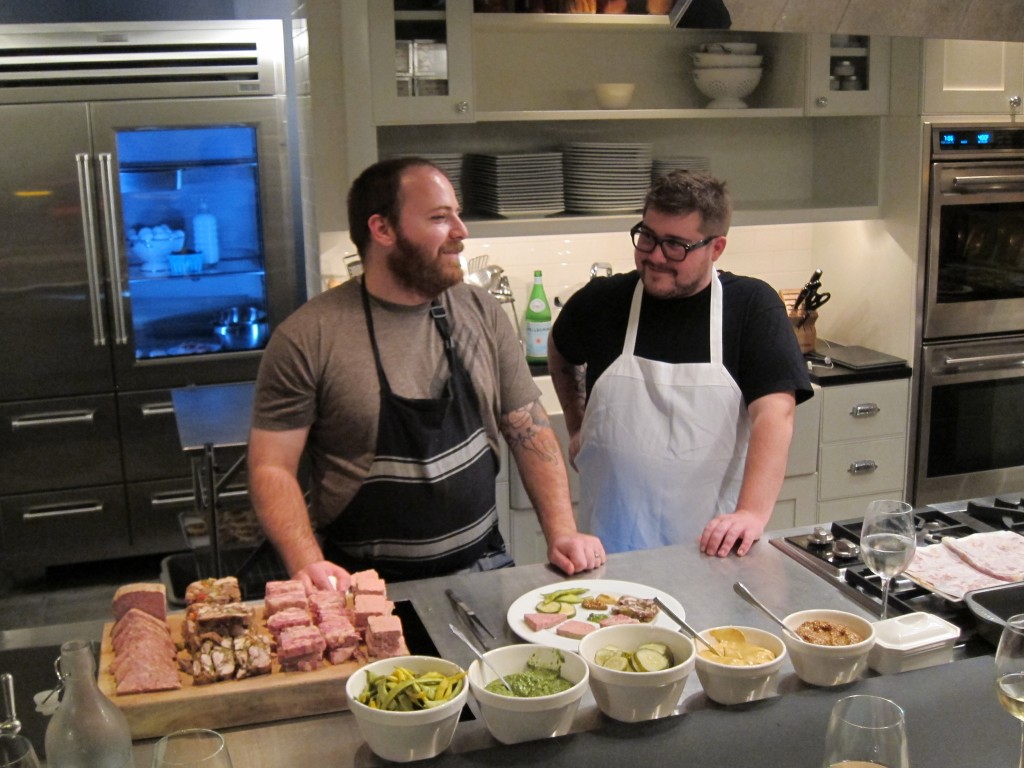
Beards are optional if you want to get into charcuterie.
Nick Macri of Southwark (left) & Mark Regan of South Philadelphia Tap Room (right)
Nick Macri is the Sous Chef and Charcutier of Southwark located in the Queens Village neighborhood of Philadelphia. This Canadian from Toronto found his way to Philadelphia on a soccer scholarship to Drexel University. He has since built a reputation as one of Philadelphia’s top meat men. He is the “People’s Champ” when it comes to Bologna, winning the Cochon555 HeritageBBQ Bologna Contest: https://twitter.com/COCHON555/status/241764084574453760.
On Tuesday, October 9th 2012, Nick Macri promised the guests of his Charcuterie Basics COOK class “even if you don’t learn anything, I promise you will not leave hungry.” Luckily for him, the class was filled with eager DIY at home charcuterie beginners who came prepared with questions. The class included hands-on demos of the techniques behind making terrines and sausages, as well as curing and brining methods.
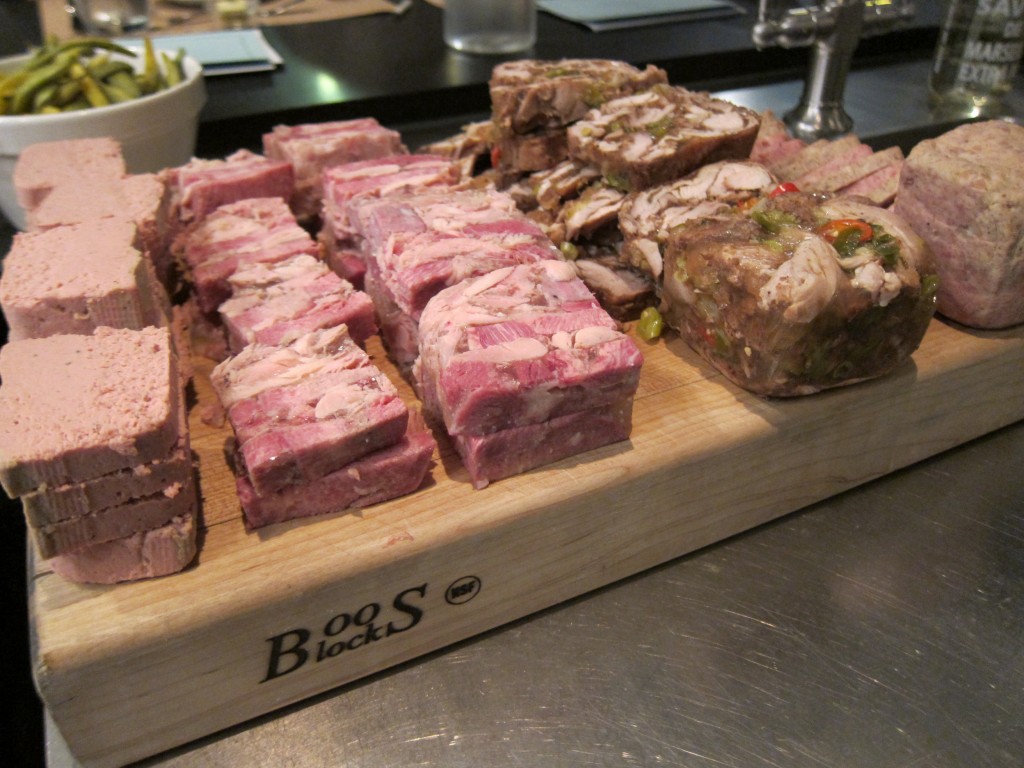
A brief history lesson. Charcuterie is the craft of preparing meats using techniques such as curing, drying, smoking, etc. Its origins go all the way back to the Roman Empire, when meats were preserved out of necessity for a longer shelf life before the age of refrigeration. Charcuterie hit its strides during the Middle Ages in France with the variety of meatloaves, sausages and cured meats. From France, it would spread to Italy and Germany each having their own forms of preparation. Then charcuterie found its way to America with immigrants bringing their knowledge with them from the Old World.
There is an appreciation of the artistry with a new generation of charcutiers who are carrying on with the tradition. You can’t go anywhere nowadays without seeing a charcuterie board on a menu. Anthony Bourdain expressed this trend eloquently on a recent episode of No Reservations: “It’s all these young chefs saying f*** it, I’m going throw a lot of really good s*** on a board.”
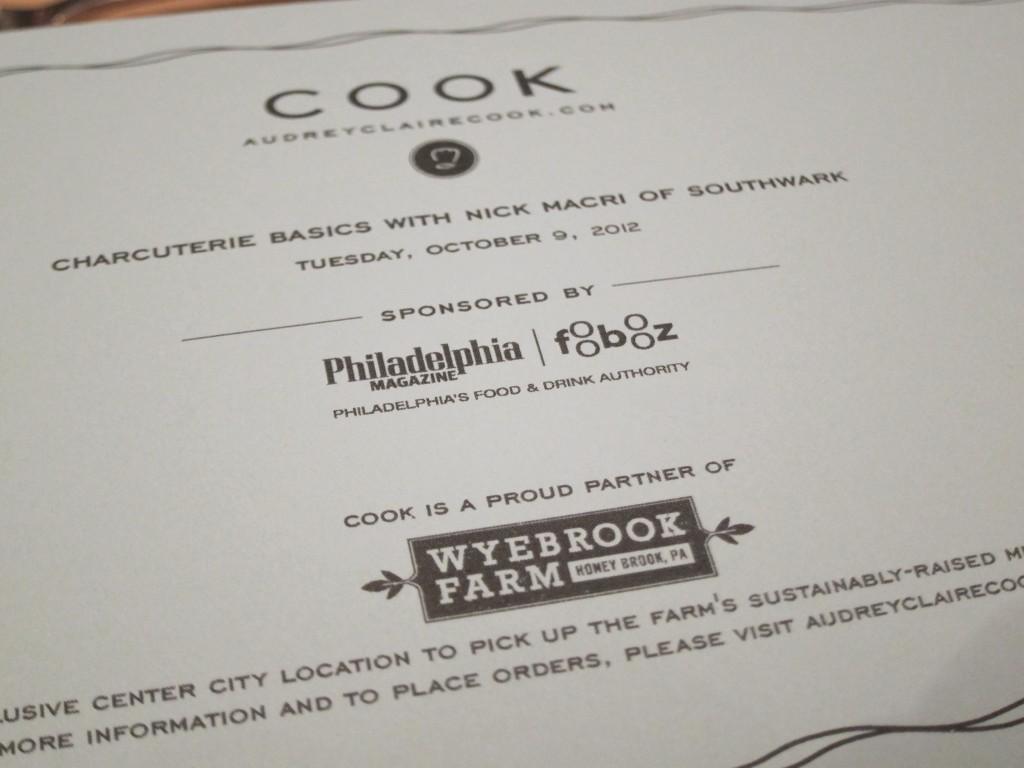
Each class starts off with an “ice breaker” question. With the class being about charcuterie, the COOK team asked guests, “Besides Southwark, where is their favorite charcuterie board in Philadelphia?” Shout outs to: Pub & Kitchen, Snack Bar, Tria, Stateside, Amis, Italian Market, Reading Terminal Market, Lacroix, Le Virtu, Brauhaus Schmitz, Bibou and Di Bruno Bros.
Nick enjoys the charcuterie from Russet.
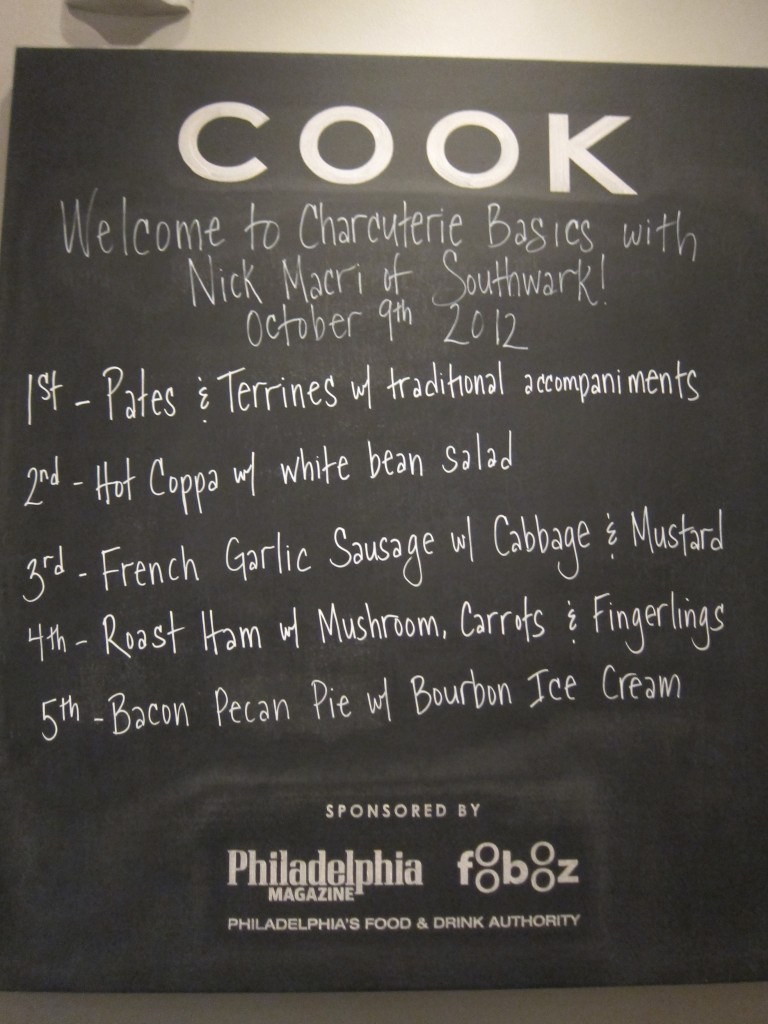
A quick run through of the menu:
- Pate: ground meat and fat minced into a spreadable paste
- Terrine: meat that is aspic-bound and formed in a loaf shape
- Coppa: a traditional Italian salume made from dry-cured pork shoulder and neck
- Sausage: ground meat stuffed in casing
- Ham: cured pork
- Pecan pie: Nick “threw bacon on it” because he wanted to work charcuterie into every course and bacon works with everything, even in desserts
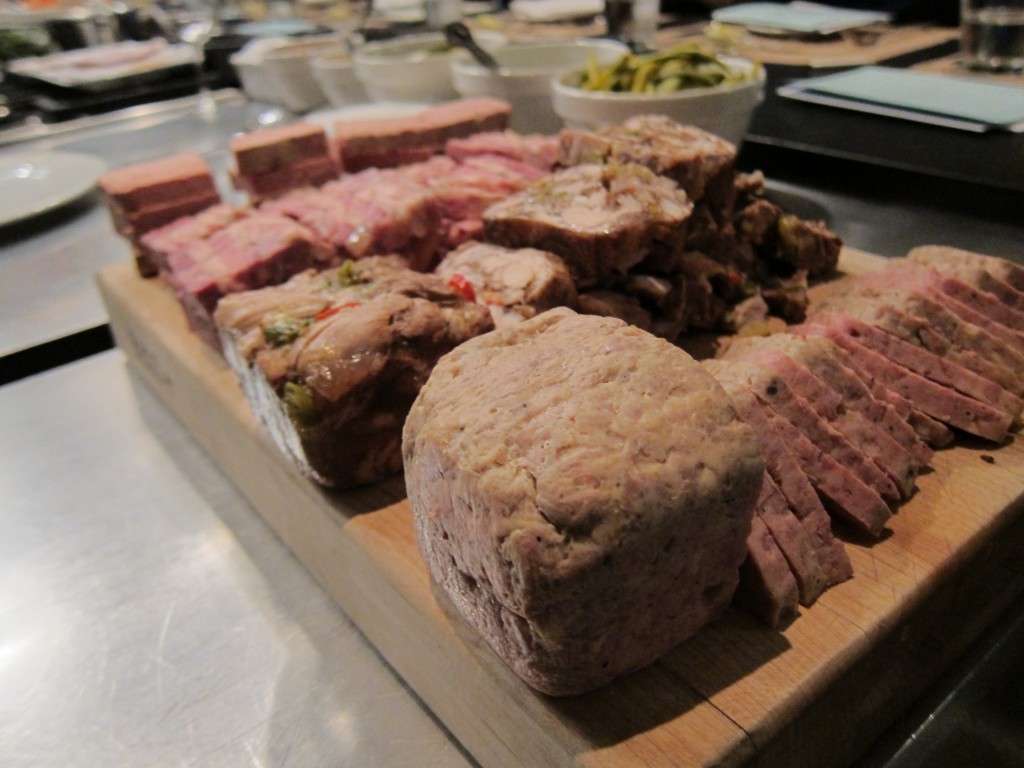
Nick started his charcuterie training early on in life, not by choice but by chore. His Dad and Uncle are from the Calabria region of Italy and immigrated to Canada where every year they would split a pig and cure. Nick found that in his culinary career he could keep up with making charcuterie and get paid for things he would have to do as a chore as a child.
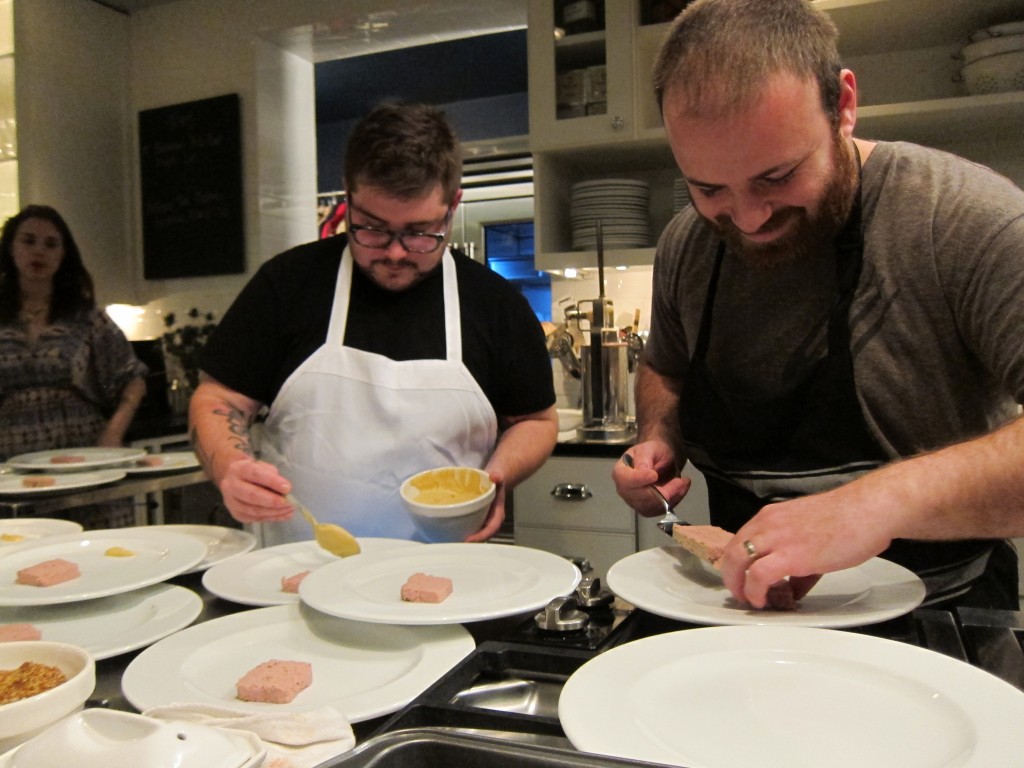
Plating First Course: Pate & Terrines
“Pate is fun to eat and make, it takes only one or two days.” said Nick. This is where he would recommend beginning at-home charcutiers to start. Since a lot of the dry curing items take patience and some know how, it would be disheartening if you were to venture into a year long cure only to have it go horribly awry. I don’t know if I have the patience to monitor and maintain something hanging in my basement or DIY curing box without trying to cut into immediately. In an age of instant gratification, patience is a virtue. In the words of Michelangelo, “Genius is eternal patience.”
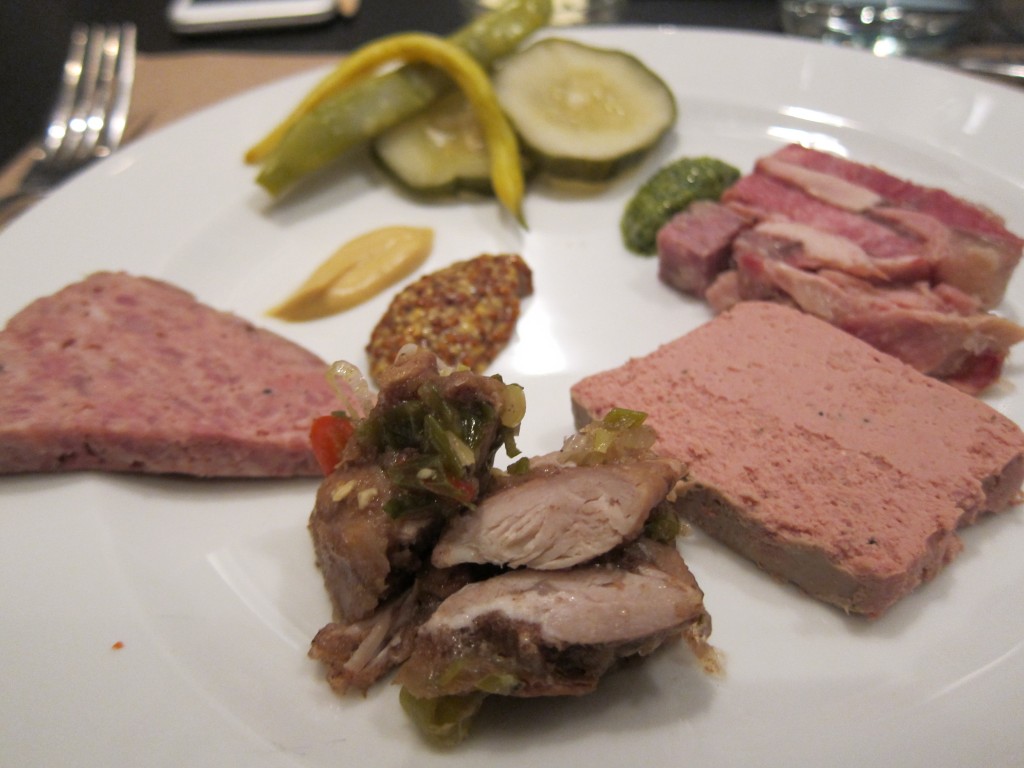
Country Pate (Left), Jerk Chicken Pate (Center), Chicken Liver Mousse (Right), Tongue in Aspic (Far Right)
Country Pate is a common name for pate that is coarsely ground. They have a rustic look and use cheaper meats with liver.
Aspic in case you’re wondering, is stock fortified by gelatin from a meat stock where the collagen breaks down. If you’re at home keeping score and don’t want to make your own meat stock, you can get plain gelatin and let it bloom to use in your terrine.
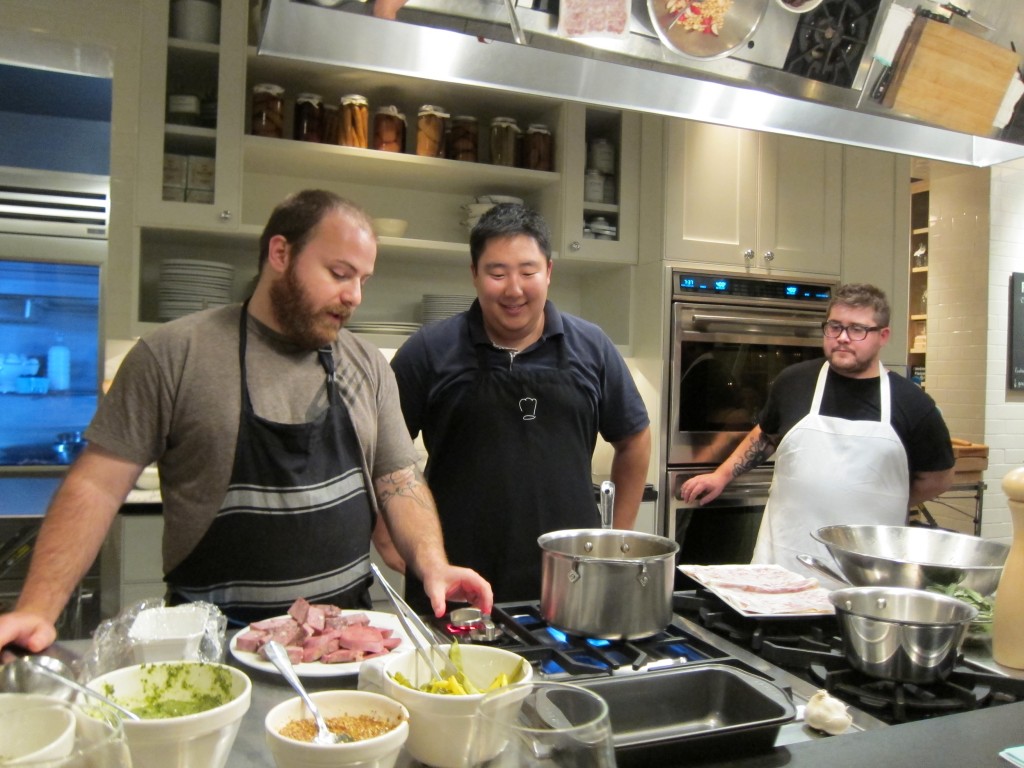
Yours truly helped with the terrine demo!
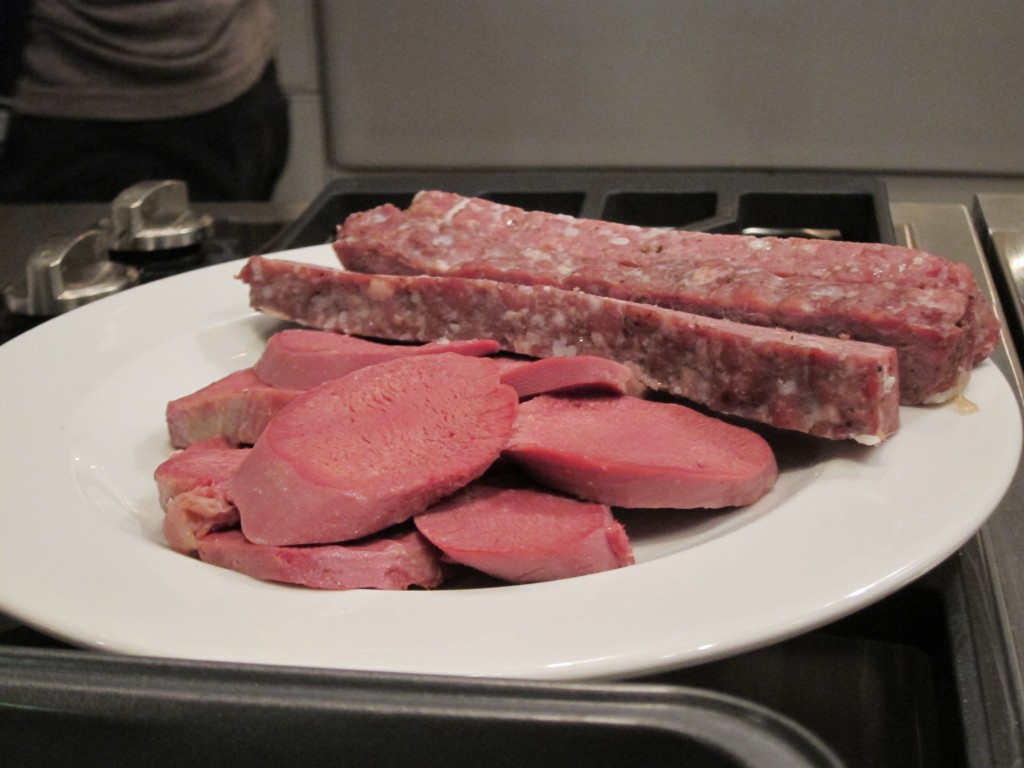
I layered the tongue and meat with aspic to bind.
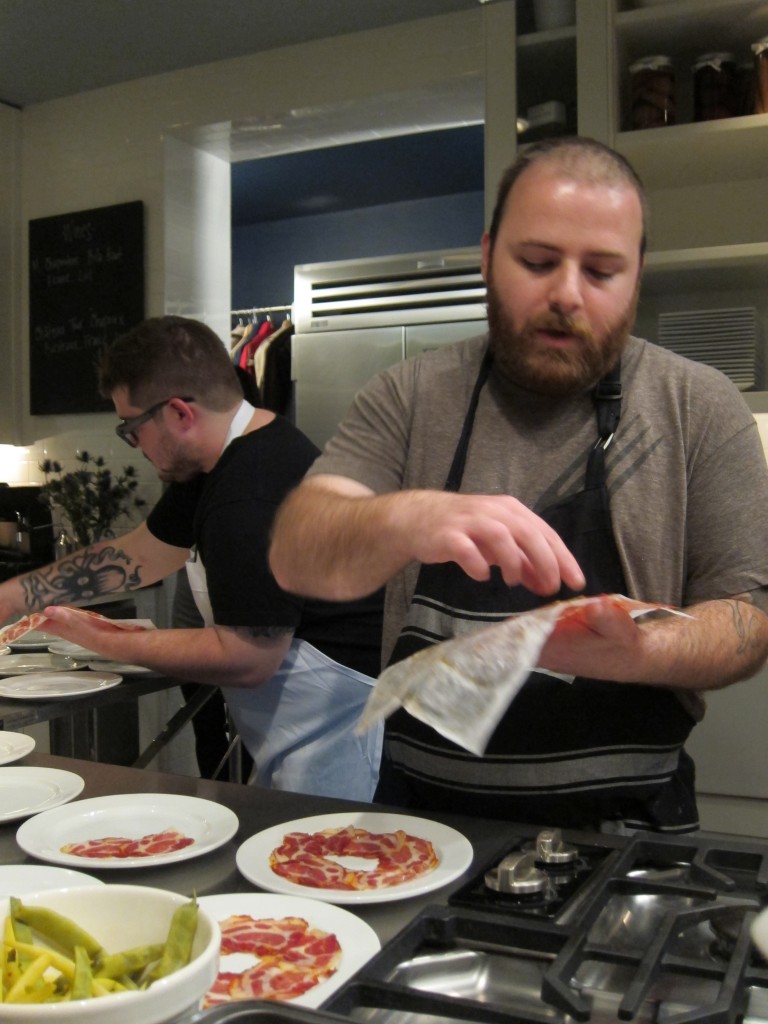
Plating Second Course: Hot Coppa with White Bean Salad
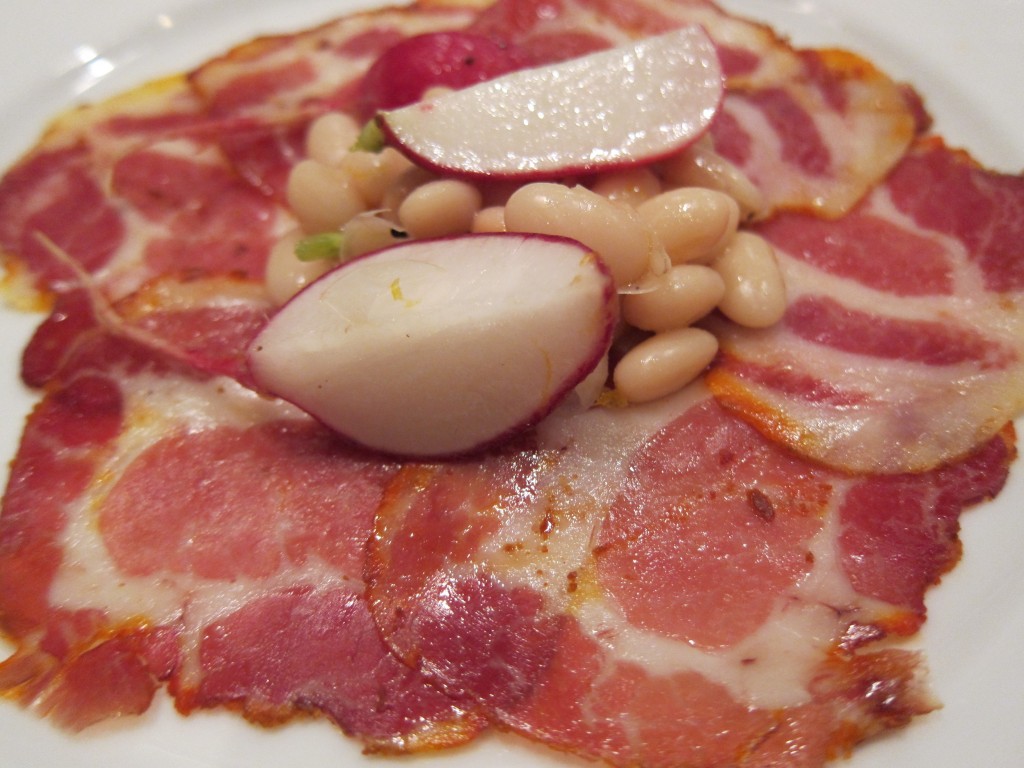
Hot Coppa with White Bean Salad
Coppa (Capicola) is an Italian dry cured salume made from the pork shoulder and neck. One of Nick’s favorites to eat. Cured in salt, seasonings and spices for 21 days then cased and tied to be dried for 2 months.
Things to note: Nitrates. There are two types of pink/curing salt, 1 and 2, which is used to retain the color of the meat and primarily to prevent botulism. They are not interchangeable. Use 1 for meats that will be cooked or smoked after curing like sausages. 2 is for dry cures over an extended time like salami and cured meats. Molds, white is good, black and red are bad. If you see black or red mold clean it off with vinegar. It’s faster to start with a smaller Coppa which will allow for a shorter cure/dry time. Nick measures the weight and water loss, and checks if the meat is tense and firm. When asked if there was a way to check it by cutting into it, Nick said that would be ill advised. Don’t fret, you can do as the Italians! All you need is a small horse bone needle which you can can stick your meats and smell if it’s done. Finish up by patching the meat with some lard!
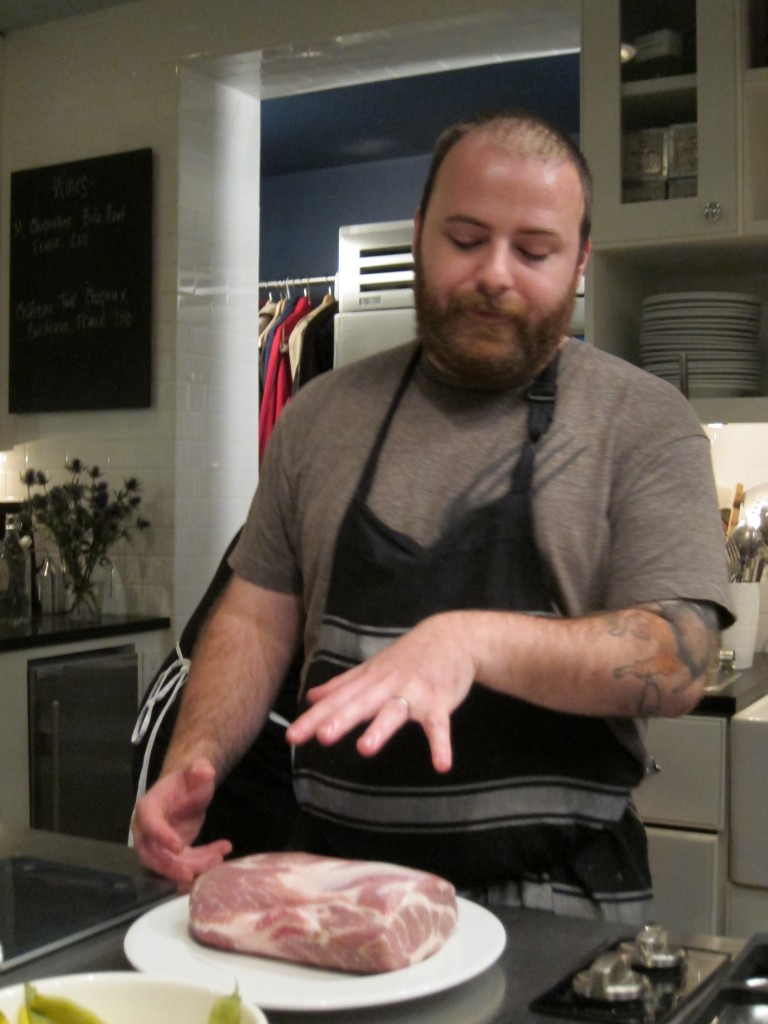
Nick using his voodoo on the pork shoulder, demoing the Hot Coppa
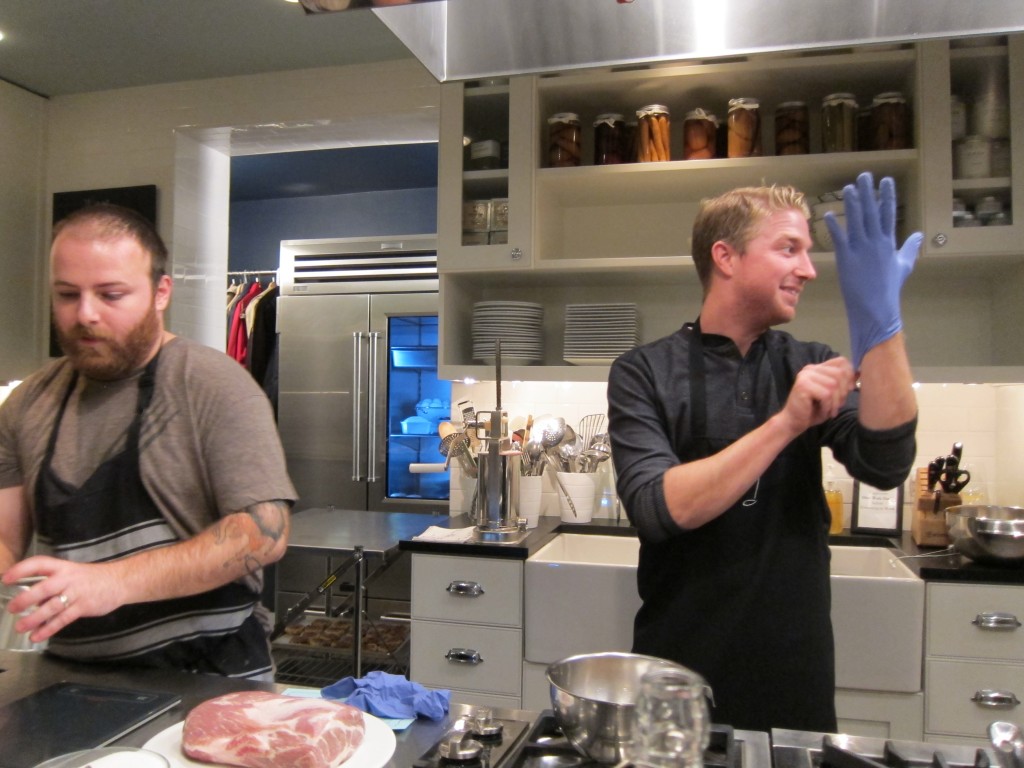
Volunteer for the Coppa, practicing safe food handling
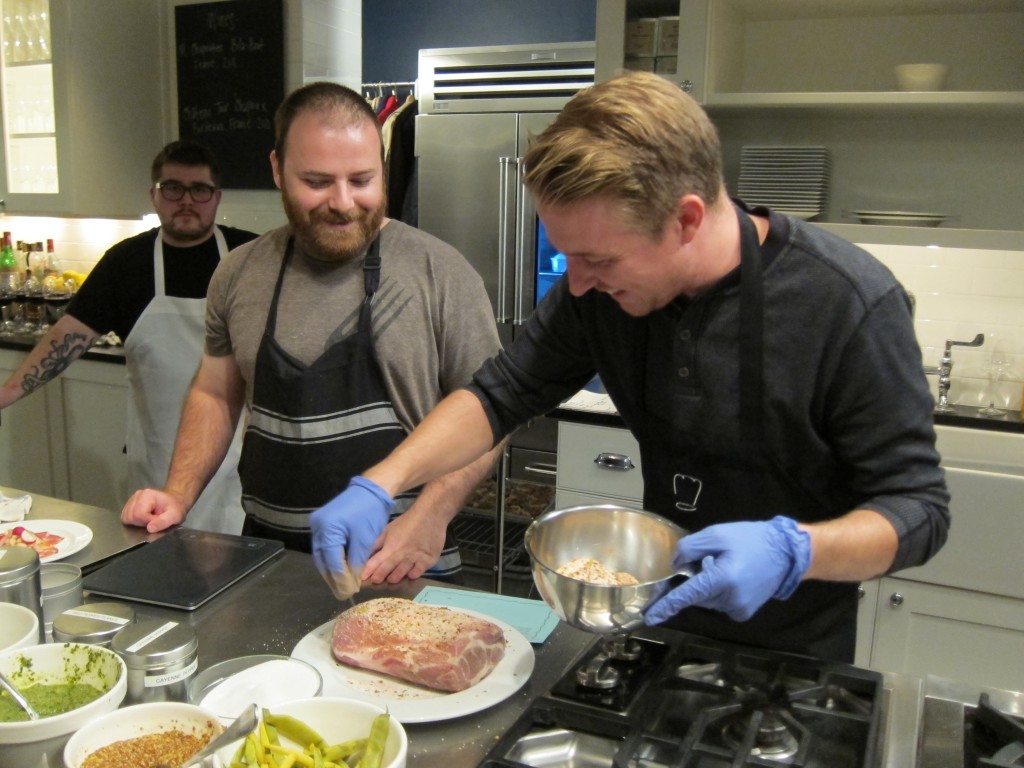
Seasoning the pork shoulder with a mishmash of spices grabbed from the COOK Pantry
SAUSAGE PARTY!
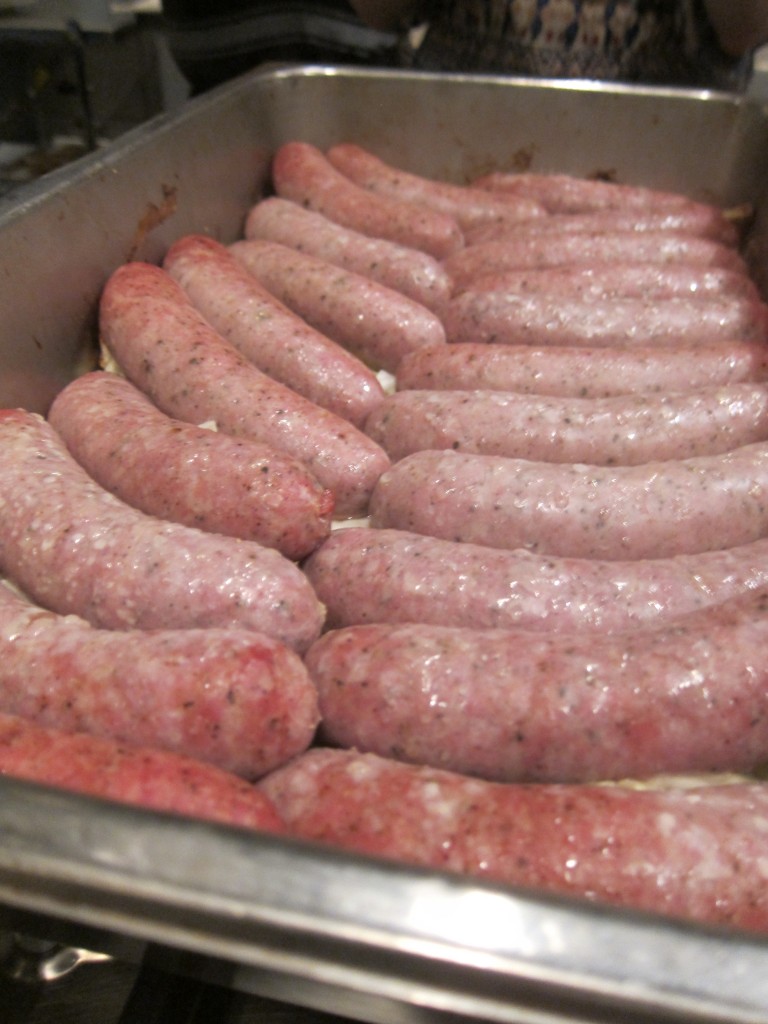
Two sausages were in a pan. One says to the other, “It’s hot in here” The other said, “Oh my God! A talking sausage!”
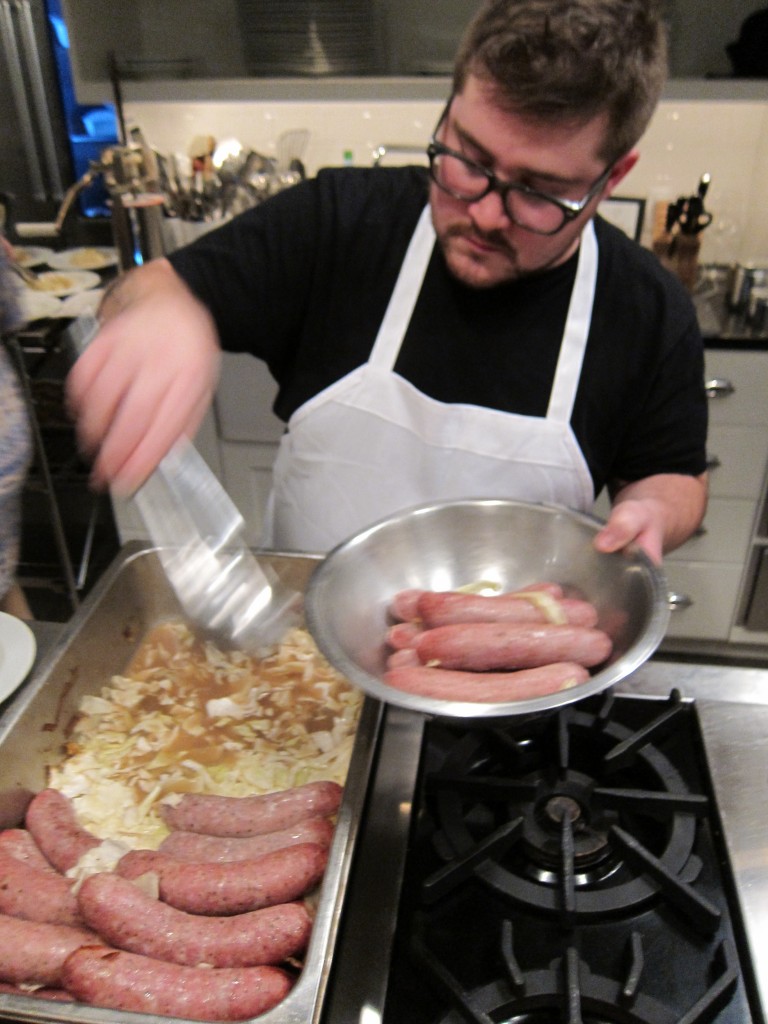
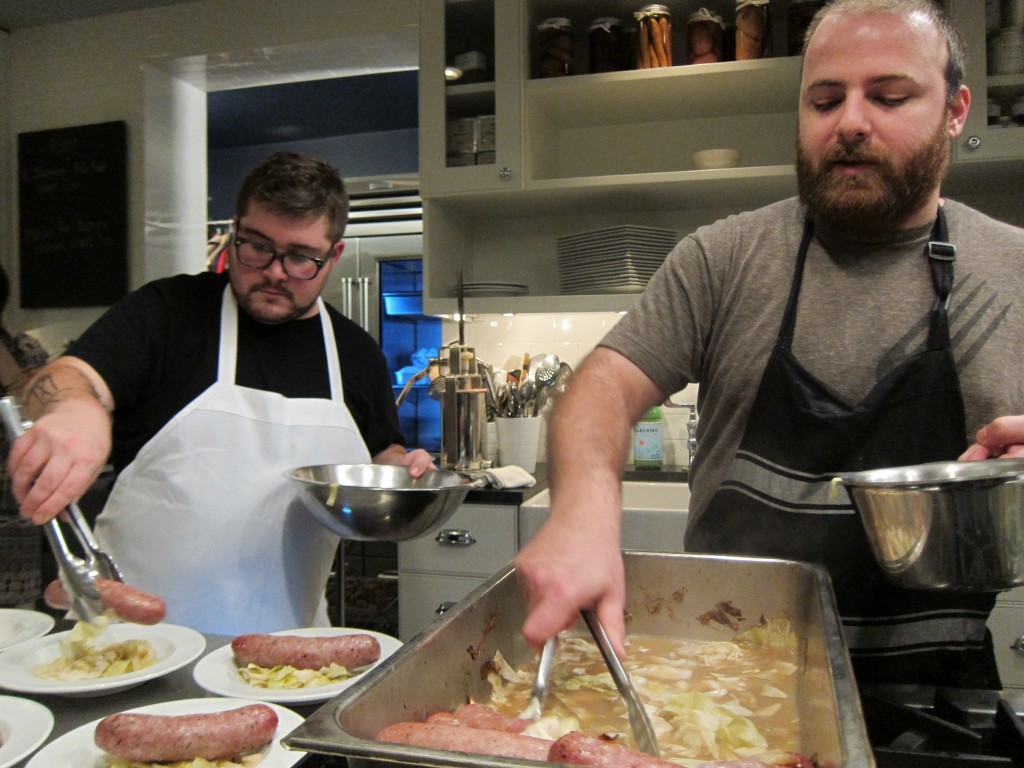
Plating the Third Course: French Garlic Sausage with Cabbage and Mustard
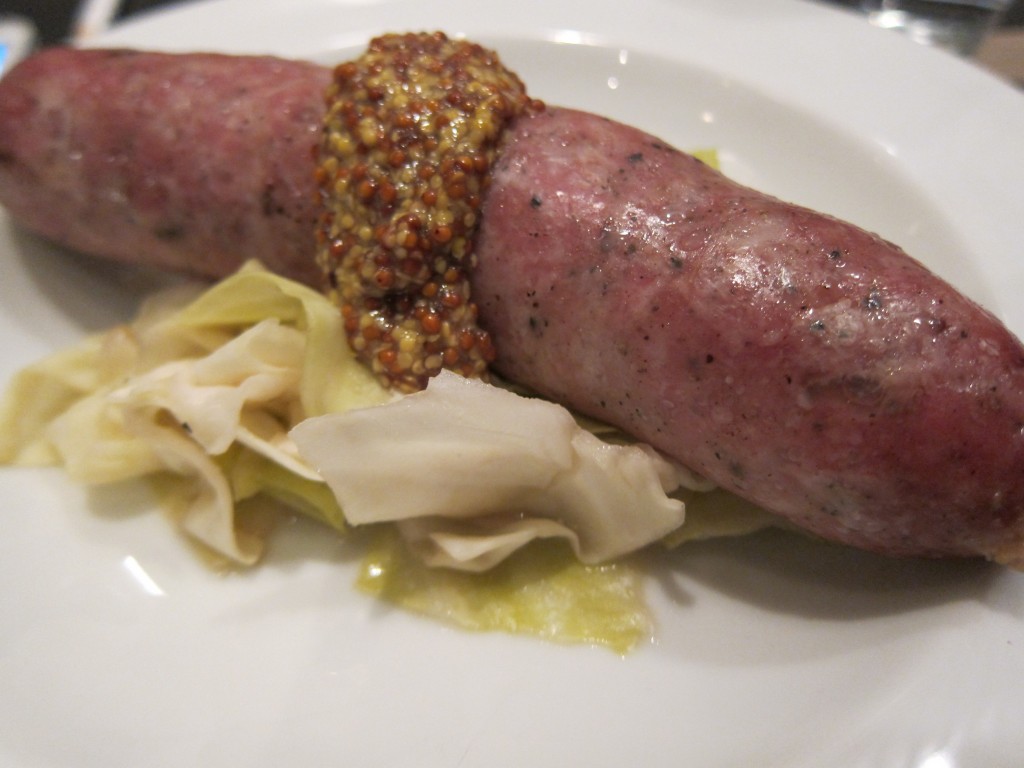
French Garlic Sausage with Cabbage and Mustard
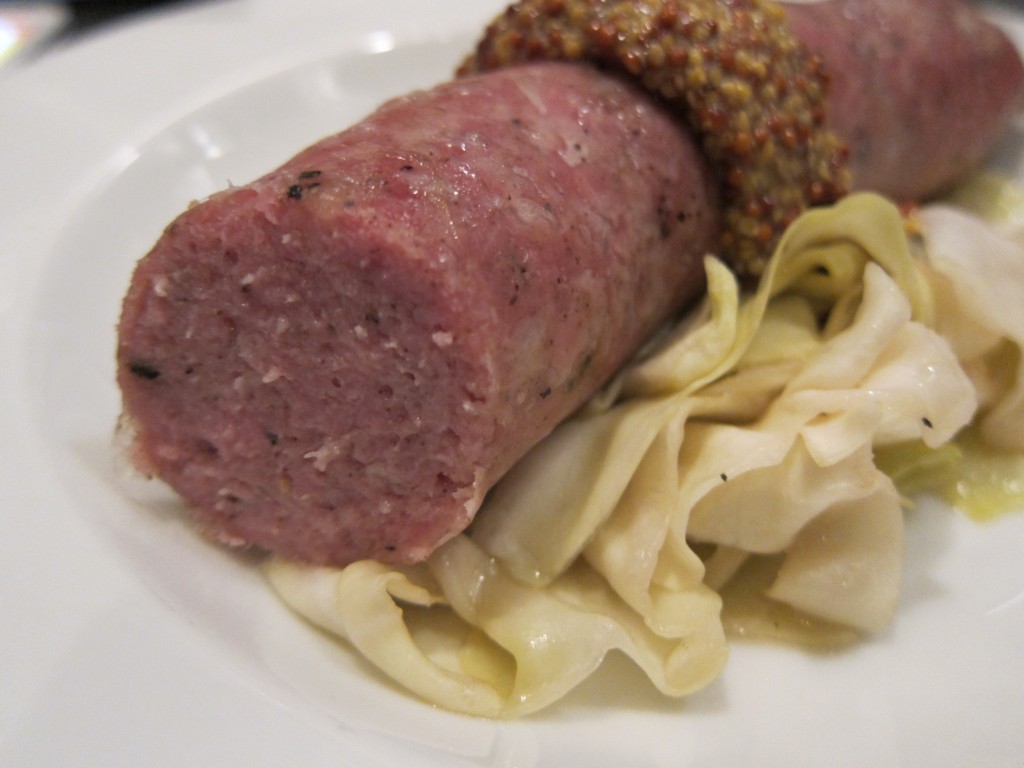
French Garlic Sausage with Cabbage and Mustard
Sausage Making Demo Video
If you have 15 minutes and really into sausage making, watch the video! Nick answered some questions from the class.
Sausage is forcemeat in casing. An emulsification of lean meat and fat. Using about 70% lean to 30% fat, typically using pork fat. Its imperative to blend clean, cold and fast.
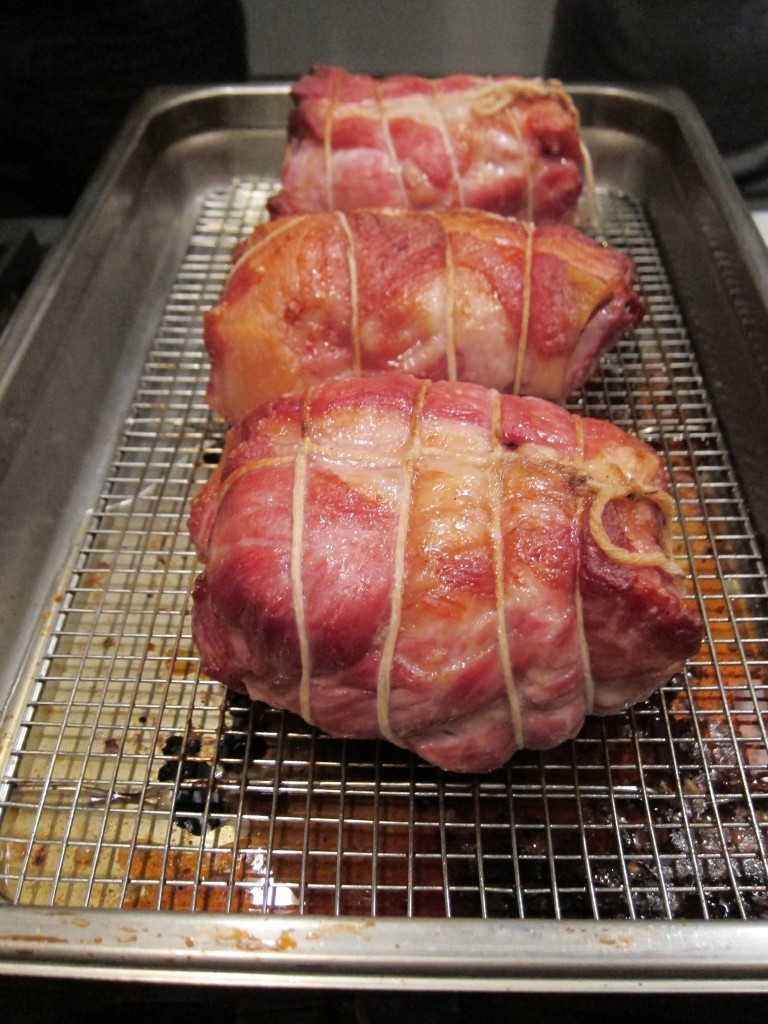
Roasted Ham…Wish y’all had smell-o-vision.
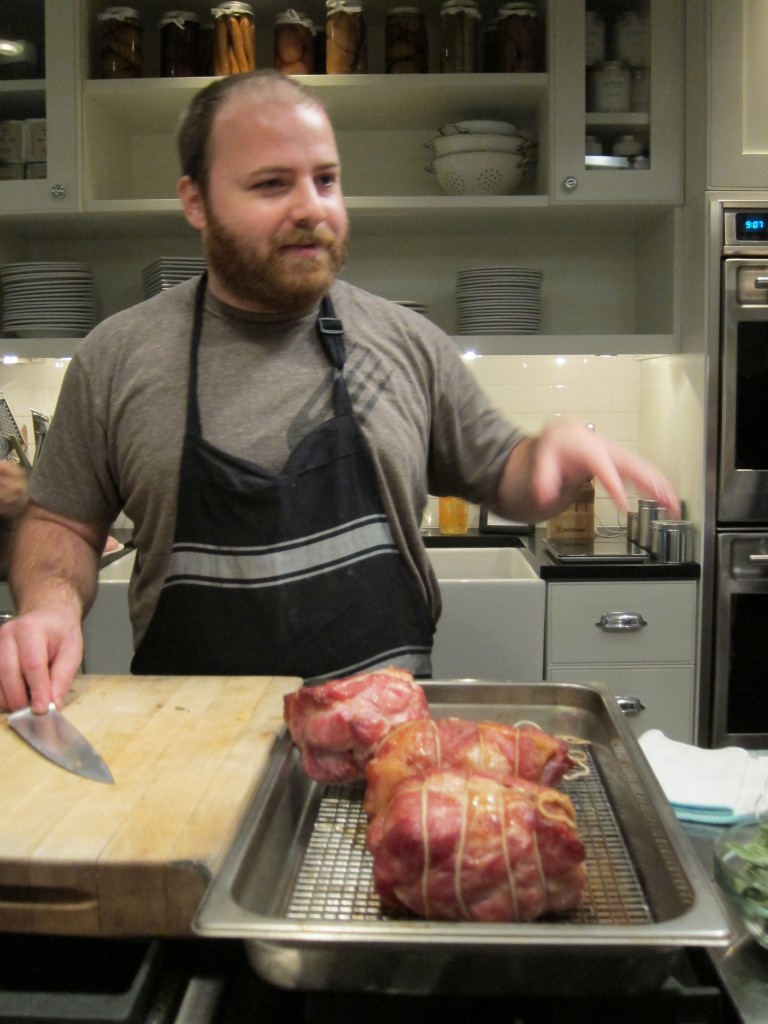
Ham is from the back leg section of the pig. These ham were wet brined which is the process of osmosis and other sciency mumbo jumbo which you could look up later. It just helps keep the meat moist when cooking and imparts more flavor with whatever you include in the brine.
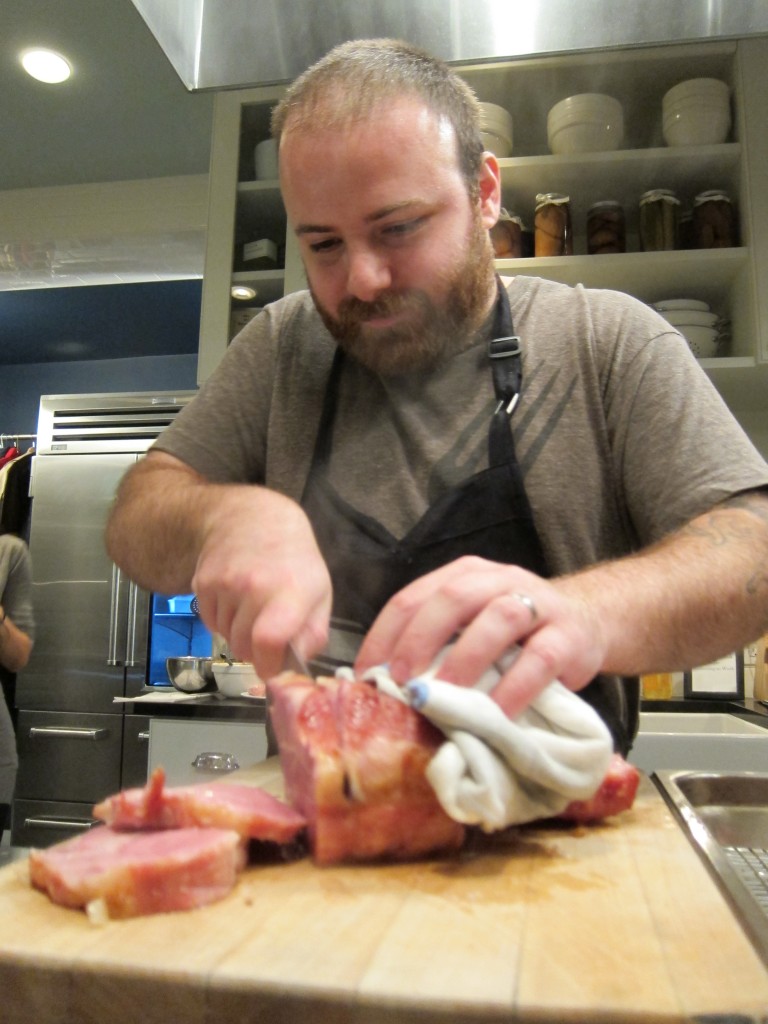
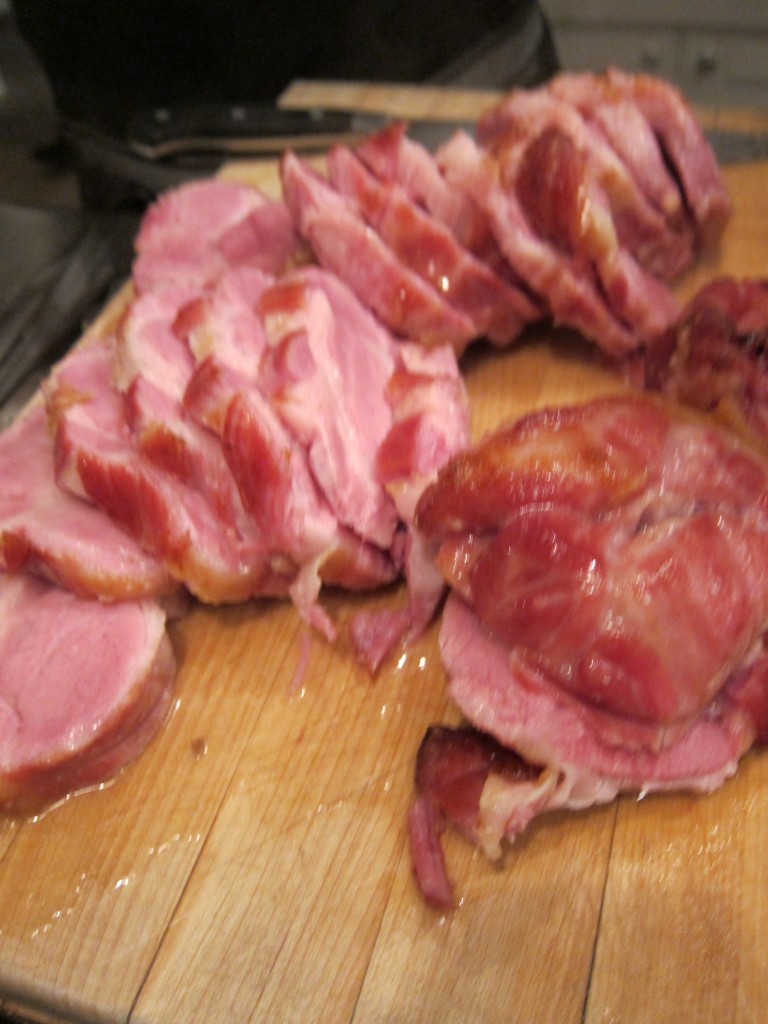
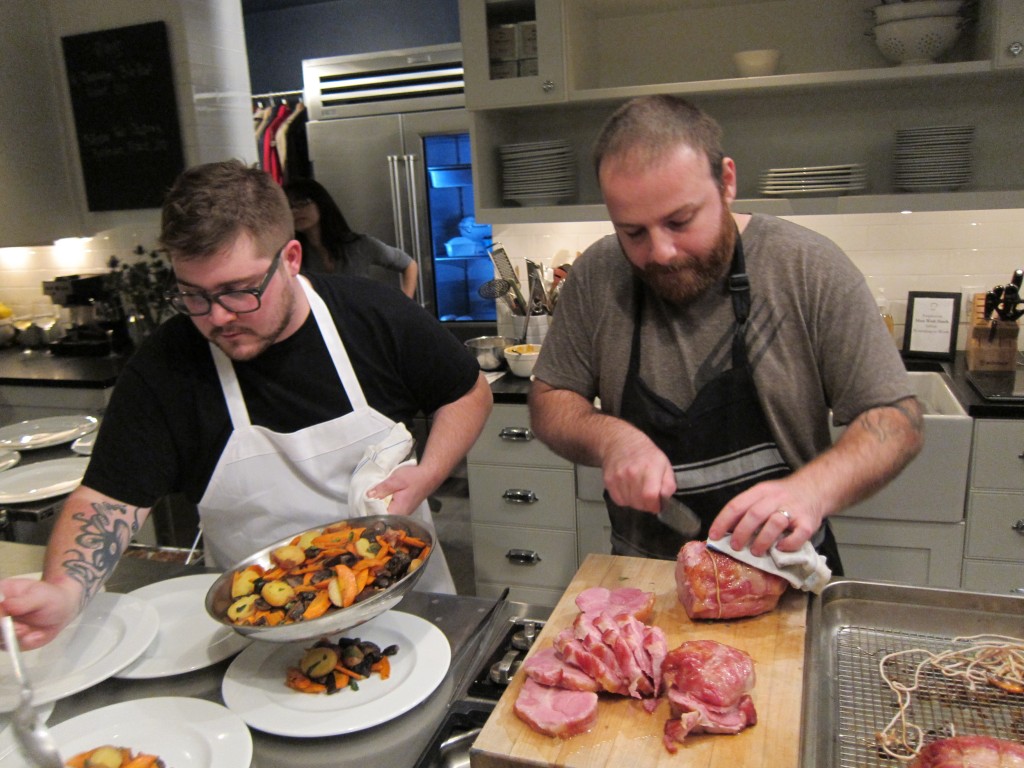
Plating the Fourth Course: Roast Ham with Mushrooms, Carrots and Fingerlings
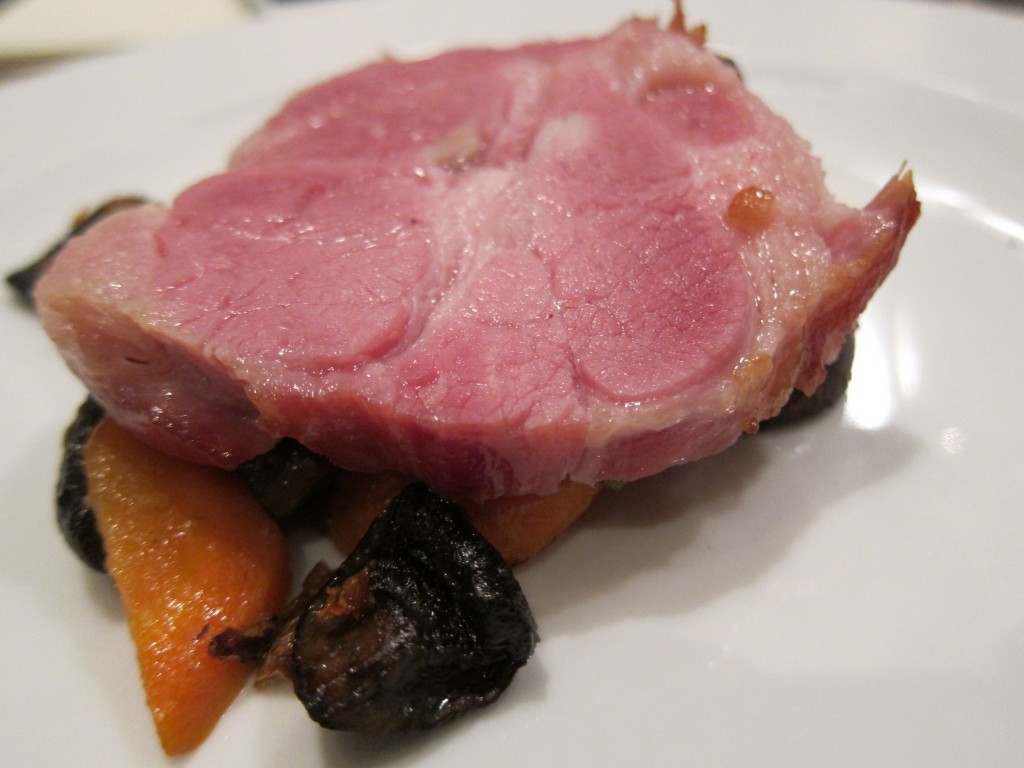
Roast Ham with Mushrooms, Carrots and Fingerlings
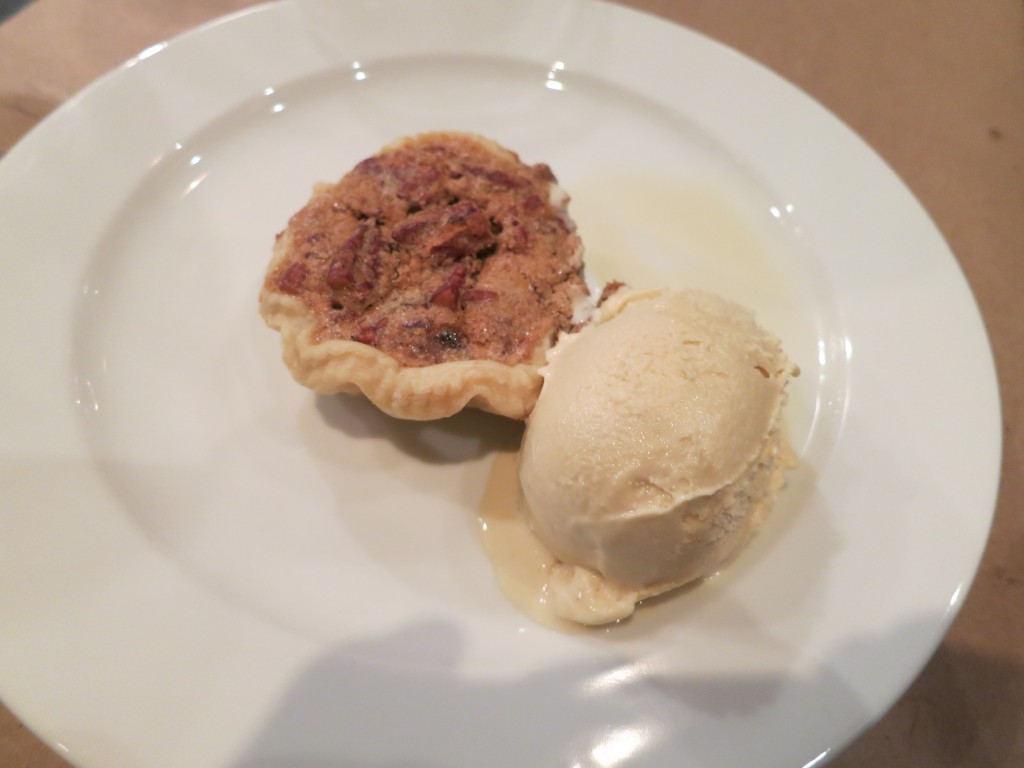
Bacon Pecan Pie with Bourbon Ice Cream
Back to Blog


